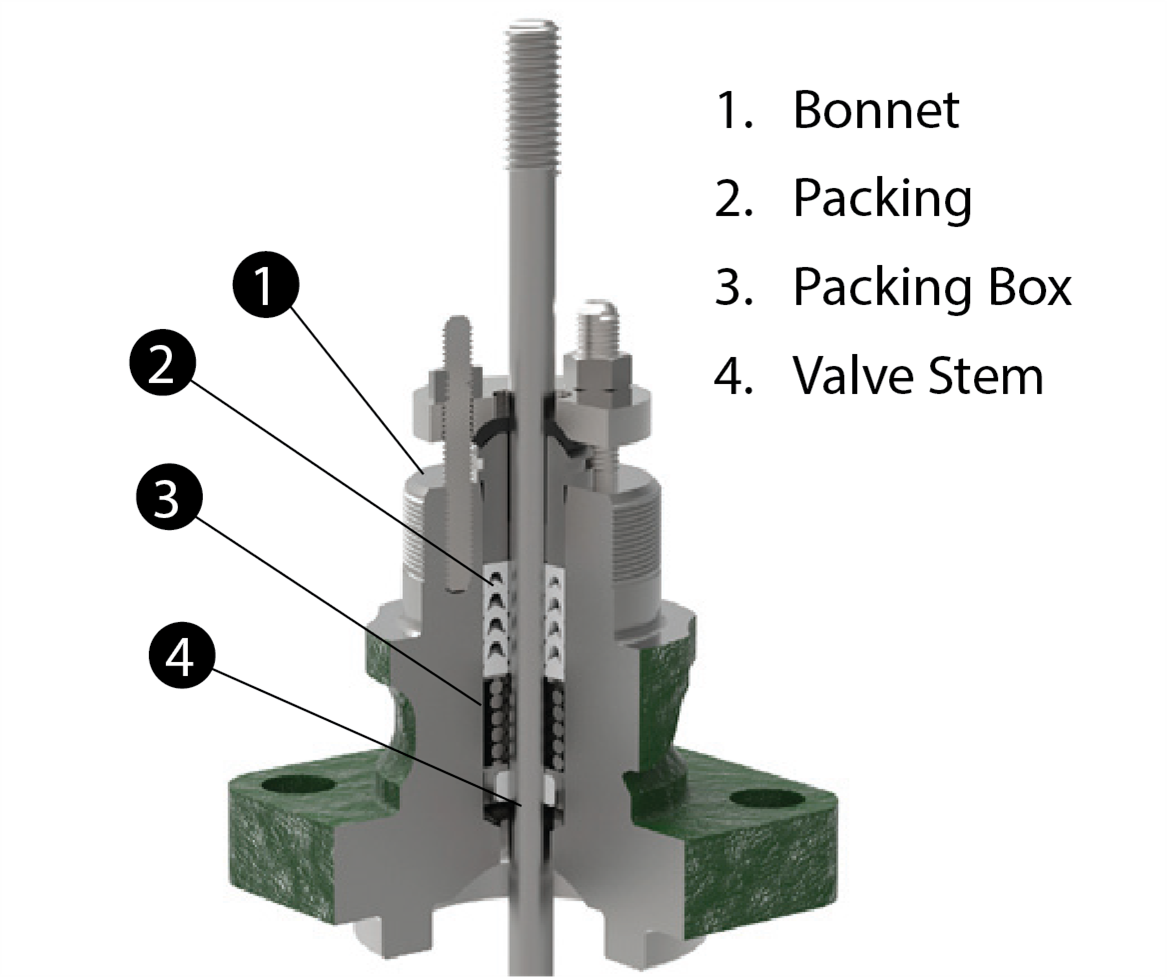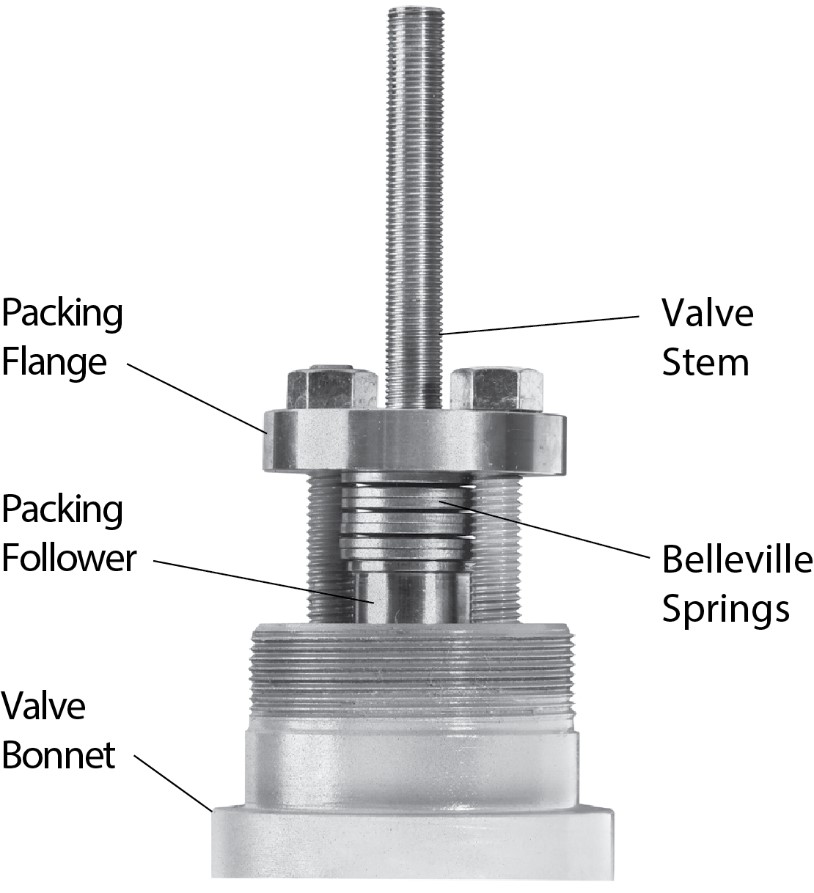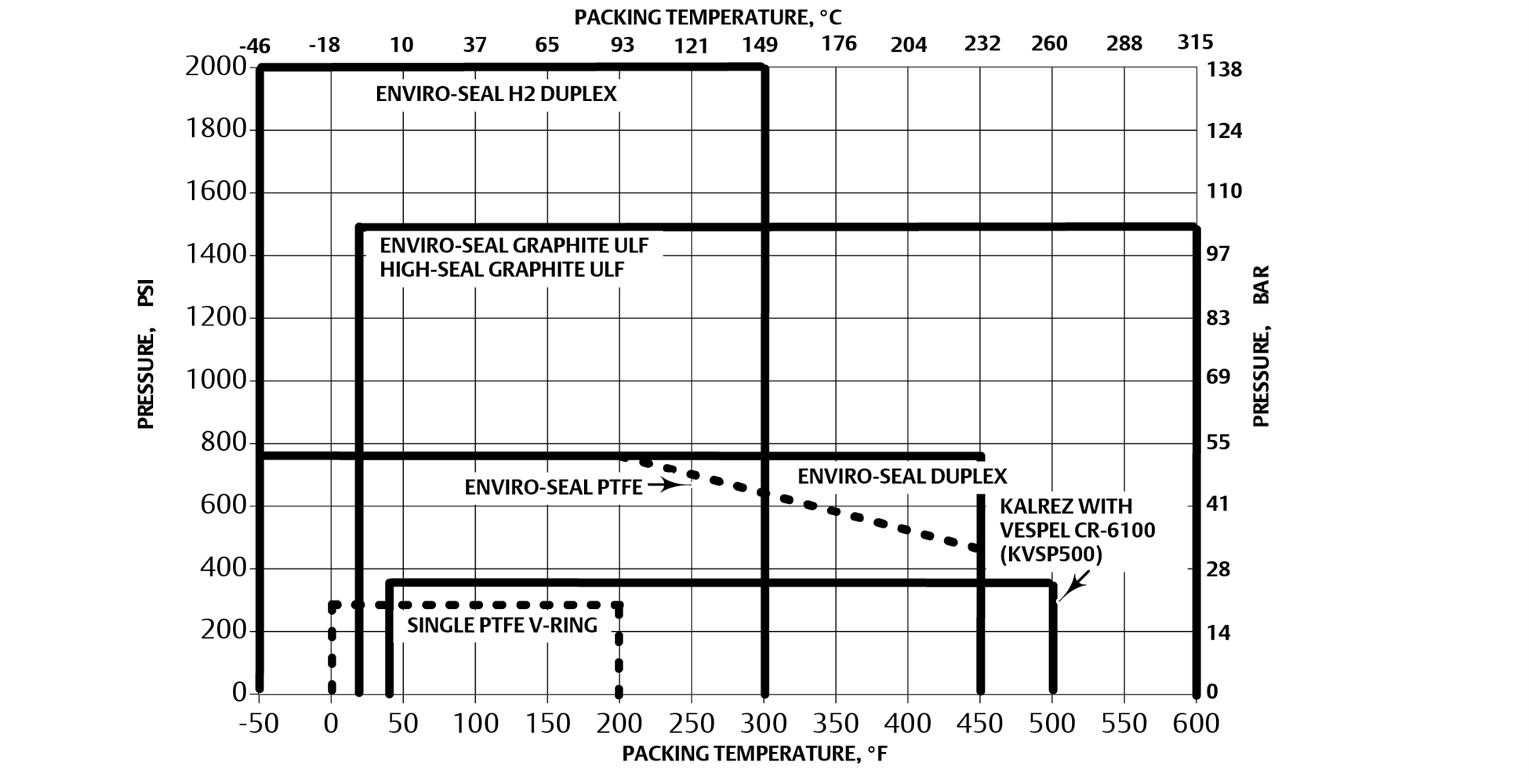Packing selection used to be relatively simple, but more stringent environmental regulations have made it much more challenging. Low-emissions packing solutions provide compliance, along with other benefits, as shown in my article in the June issue of Hydrocarbon Processing, titled Added Benefits of Control-Valve Environmental Packing.
Packing basics
In all control valve applications, the valve stem must move freely while providing process media containment, through up to millions of cycles. PTFE, graphite, or some other type of specialty polymer rings encircling the valve shaft make up the packing materials.

FIG. 1. A typical rising stem packing assembly is shown here. As the flange bolts are tightened, they push down on the packing flange, packing follower and the packing itself. As the packing is compressed, it squeezes outward to seal against the stem and packing box.
The packing rings are typically compressed with a metal packing follower that pushes down and squeezes the rings sufficiently to seal them against the packing box walls and the valve stem, and herein lies the main challenge.
If the compression is set too low, the stem will move easily, but the packing will leak. If the compression is set too high, the packing will seal quite well, but the excessive force on the valve stem will impede movement and, ultimately, flow control.
Packing rings wear out over time due to constant valve stem movement, eventually causing a leak.
Design to reduce emissions
Live-loading springs and alternative packing ring materials achieve tight sealing and allows smooth stem movement.

FIG. 2. Instead of relying on manually adjustable bolts, environmental packing designs use Belleville springs to compress the packing and maintain pressure, even as the packing wears over time, resulting in much lower emissions.
Compressed Belleville springs maintain a constant downward pressure on the packing, even as it wears over time.
Highly polished and hardened stem shafts are often paired with PTFE packing rings to provide good sealing while allowing smooth valve movement, but PTFE begins to degrade at temperatures over 400 degrees F. For higher temperature service, combinations of graphite, PTFE and carbon-reinforced PTFE are employed to achieve low leakage at elevated process temperatures.
To overcome even higher pressures and temperatures, recently introduced low-emissions packing configurations incorporate a more complex series of carefully selected materials placed in very specific locations. This expanded service condition range provides new opportunities to increase packing service life and reduce lifecycle costs for many valve applications.
Choosing the right solution
Unlike standard solutions, live-loaded packing provides constant compression over time, particularly important in certain types of service, such as high-pressure steam.
Once steam begins to leak through packing, it establishes flow channels that can only be closed by tightening the packing to such a degree that the valve stem cannot move. Live-loaded packing maintains consistent pressure, which keeps the leak from starting in the first place, thus avoiding this problem.
The latest live-loaded environmental packing designs have greatly extended the allowable pressure and temperature limits in low-emissions service.

FIG. 3. Recent design improvements have significantly extended the allowable pressure and temperature range of rising stem live-loaded packing in low-emissions service (A). If very low (< 100 ppm) emissions are not required, the allowable pressure and temperate ranges are further extended (B).
These much-expanded pressure and temperature limits allow live-loaded, low-emissions packing to be employed in a wide range of valve applications for both rotary and sliding-stem valves, providing lifecycle cost reductions due to minimal ongoing maintenance, very low leakage rates, consistent performance and extended service life.
Emerson’s proprietary packing system extends performance with certifications at the 50-ppmv level, with demonstrated performance as low as 3 ppm over 100,000 cycles—while simultaneously providing low packing friction and extended service life, all with minimal required maintenance. Most applications, even those without low emissions requirements, will therefore see lifecycle cost improvements by switching to live-loaded, low-emissions packing.
End users should consult their valve vendor to explore options as design offerings have expanded greatly, providing the opportunity to significantly improve valve performance and reduce operating costs with proper product selection.
Visit the Fisher™ ENVIRO-SEAL™ Control Valve Packing Systems section on Emerson.com to know more.




